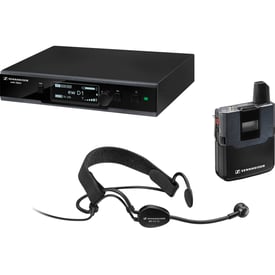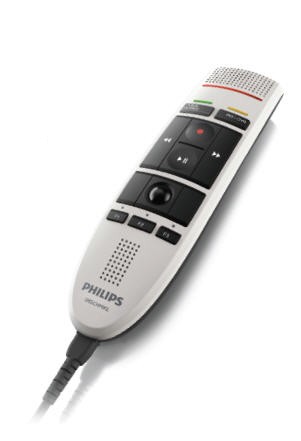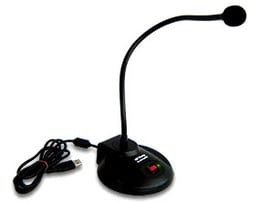2 min read
Three Questions to Ask When Selecting a Pathology Dictation Microphone
Voicebrook Wednesday August 26, 2015

Selecting the right microphone for your pathology speech recognition environment can be an intimidating process, but it doesn’t need to be. Not all microphones that work for other applications or environments can be counted upon to work well for speech recognition applications. Our team has tested a wide variety of microphone hardware directly with our application, so it takes the guesswork out. We have also integrated many microphone controls directly into our VoiceOver application. Only the best options become our recommendations. There are a few basic questions you need to ask yourself before choosing the right microphone for your environment.
1. Are you handling specimens while dictating?
If you are handling specimens, you should look to be totally hands-free and wireless. For Gross Rooms in particular, we feel this needs to be a requirement. Our best-of-breed recommendation is the Sennheiser Wireless Kit and Sennheiser ME3 headset. The Sennheiser solution features a wireless receiver along with a transmitter pack that users put in their pocket or attach to their belt. These have multiple configurable frequencies, so they can avoid electrical interference and run other kits side-by-side in the same environment. The ME3 headset focuses on noise cancellation as well as stable microphone positioning, both of which are very important in ensuring accuracy, especially in the gross room where people may be talking, phones are ringing, a microtome could be cutting, and exhaust fans are running on overdrive.
2. Are you in an office by yourself?
Most office environments provide a relatively quiet and consistent environment. This gives users a wider variety of options that will work well based upon personal preference.
The most robust choice is the boom microphone. A boom microphone sits on top of your desk and has a flexible goose neck arm that can be twisted and turned into the optimal dictation position. This allows for hands-free operation with some capability for noise cancellation to handle background noise from things like overhead air vents. There are a few other options, like Bluetooth headsets, wired headsets, and hand-held microphones, but the boom microphone still tops our recommendations, as it is lower in cost and a much more simple device that does not need to be worn or charged.
3. Are you experienced with hand-held devices?
Many clients have requested hand-held devices, as they’ve had prior experience with older dictation systems using this style of device. The important distinction here is that while the usage appears similar, it’s not. Recorded audio destined for transcription can be boosted and replayed any number of times until the transcriber can make out what the user is saying. Speech recognition, on the other hand, must deliver a high quality recognition result with a rapid turnaround (users expect a response in real time). Many users with handheld devices don’t focus on consistent microphone positioning, and this doesn’t usually impact them when the audio is sent to a transcriber. However, with speech recognition, this can have a big impact, as fluctuations in your dictation volume can cause recognition issues. This is why we recommend that even experienced hand-held microphone users consider a boom microphone in an office environment. This also frees up one hand to manipulate slides and microphone magnification.
We recognize that some users will still prefer to use a hand-held device, and the Philips SpeechMike III makes an excellent choice for those who are very comfortable with hand-held devices as part of their workflow. The device also features programmable buttons that can aid in the command and control features of the workflow, as well as a track ball and left and right mouse buttons.
Final Word:
Microphone choice relies on a lot of factors including environment, goals, and personal preference. At Voicebrook, we have already evaluated the best-of-breed microphones in every class of offering and we are confident that we can find a microphone that meets the needs of Pathology reporting users. In a future blog we will discuss the role of the foot pedal in improving dictation time and completing a hands-free solution. If you have a specific question about a microphone, we are always here to help.



